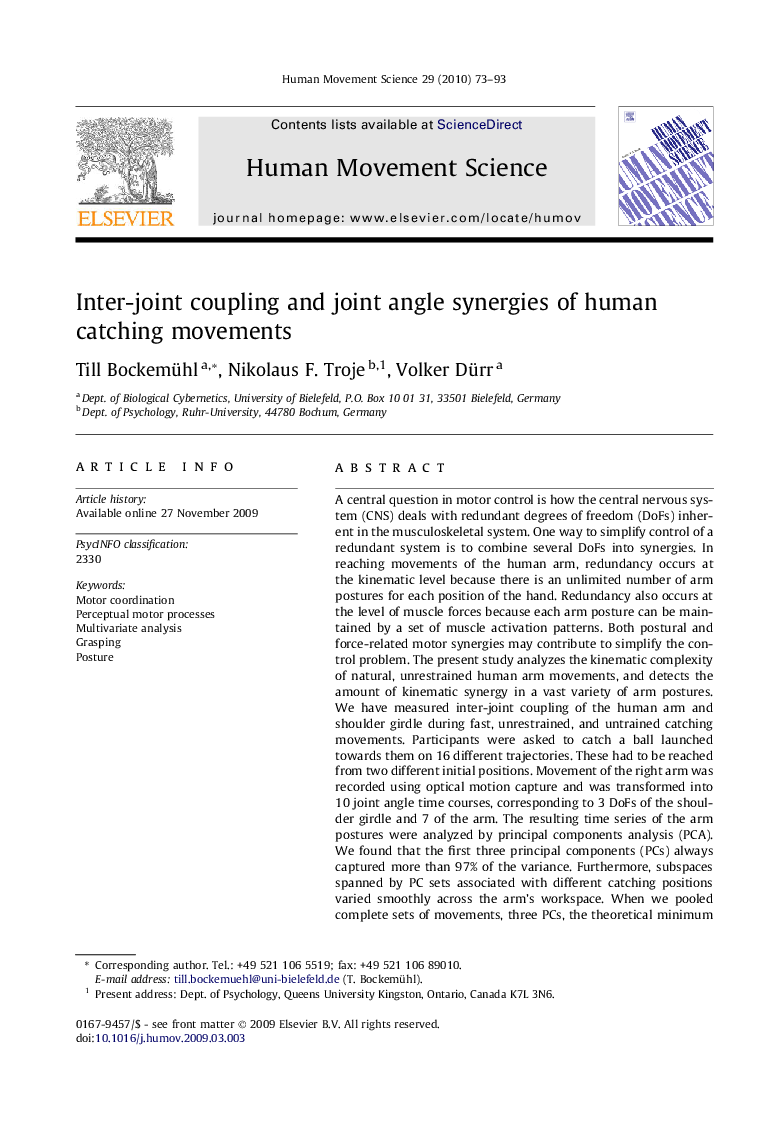| Article ID | Journal | Published Year | Pages | File Type |
|---|---|---|---|---|
| 928742 | Human Movement Science | 2010 | 21 Pages |
A central question in motor control is how the central nervous system (CNS) deals with redundant degrees of freedom (DoFs) inherent in the musculoskeletal system. One way to simplify control of a redundant system is to combine several DoFs into synergies. In reaching movements of the human arm, redundancy occurs at the kinematic level because there is an unlimited number of arm postures for each position of the hand. Redundancy also occurs at the level of muscle forces because each arm posture can be maintained by a set of muscle activation patterns. Both postural and force-related motor synergies may contribute to simplify the control problem. The present study analyzes the kinematic complexity of natural, unrestrained human arm movements, and detects the amount of kinematic synergy in a vast variety of arm postures. We have measured inter-joint coupling of the human arm and shoulder girdle during fast, unrestrained, and untrained catching movements. Participants were asked to catch a ball launched towards them on 16 different trajectories. These had to be reached from two different initial positions. Movement of the right arm was recorded using optical motion capture and was transformed into 10 joint angle time courses, corresponding to 3 DoFs of the shoulder girdle and 7 of the arm. The resulting time series of the arm postures were analyzed by principal components analysis (PCA). We found that the first three principal components (PCs) always captured more than 97% of the variance. Furthermore, subspaces spanned by PC sets associated with different catching positions varied smoothly across the arm’s workspace. When we pooled complete sets of movements, three PCs, the theoretical minimum for reaching in 3D space, were sufficient to explain 80% of the data’s variance. We assumed that the linearly correlated DoFs of each significant PC represent cardinal joint angle synergies, and showed that catching movements towards a multitude of targets in the arm’s workspace can be generated efficiently by linear combinations of three of such synergies. The contribution of each synergy changed during a single catching movement and often varied systematically with target location. We conclude that unrestrained, one-handed catching movements are dominated by strong kinematic couplings between the joints that reduce the kinematic complexity of the human arm and shoulder girdle to three non-redundant DoFs.
